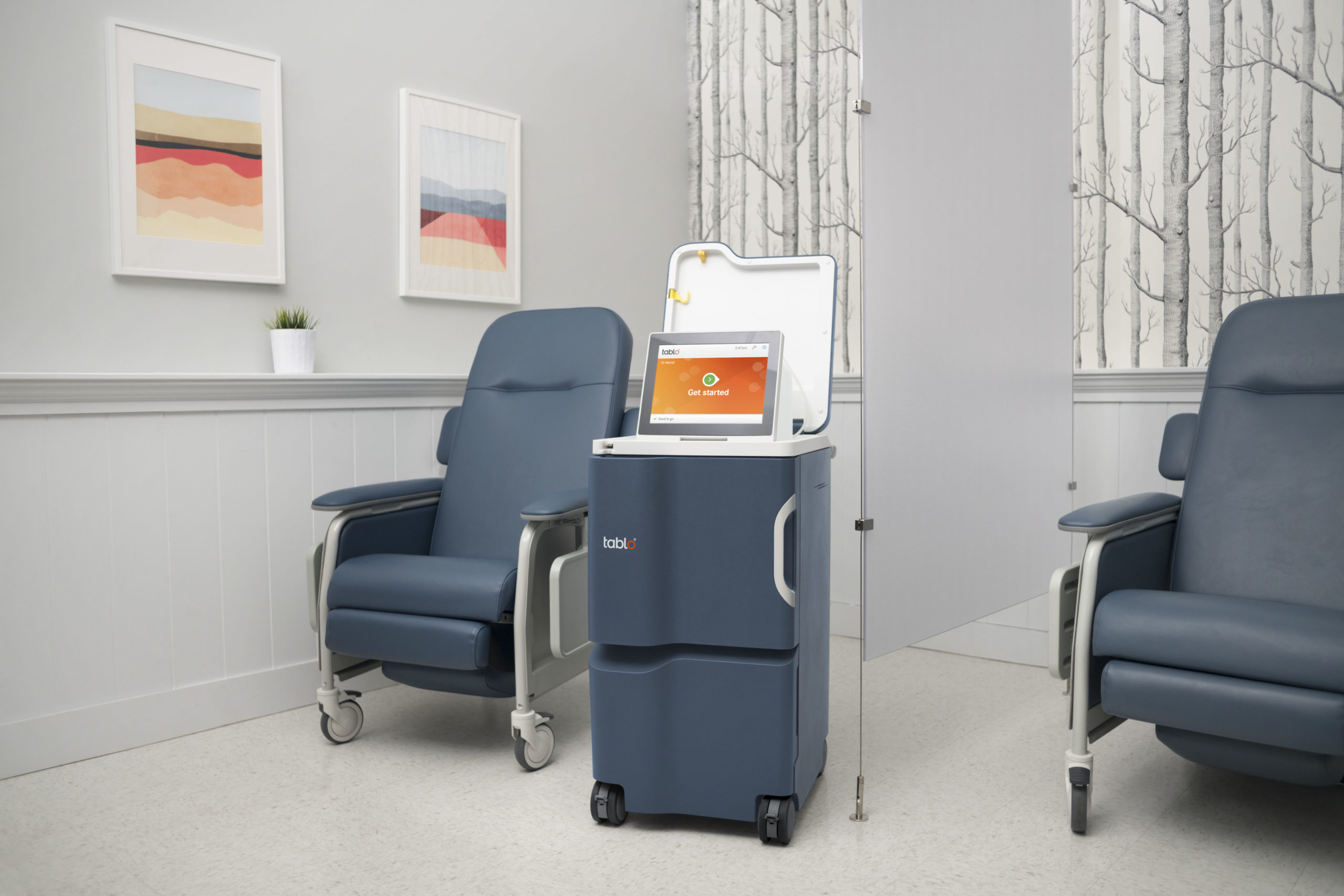Calling All Kidney Care Innovators to Unite in Advocacy
By: Tonya Saffer, MPH
Head of Government Affairs & Market Access

There’s a saying in advocacy circles: “If you’re not at the table, you’re on the menu.”
Before I started with Outset, I was asked if a new, relatively small company could have an impact on public policy. My answer was yes, but not on our own. We will need to collaborate and unite with others towards a shared vision, a group of “others” that includes patient advocacy groups, manufacturing associations, medical providers, and even potential competitors; and that is exactly what we are doing. Manufacturers, patients, healthcare providers, health systems, and payers interested in revamping the dialysis care delivery model can join us in our advocacy to achieve a patient-centered dialysis model that focuses on self-dialysis at home or in another clinical setting.
Engaging in public policy is our civil duty. When individuals stand up for themselves, vocalize their views, build consensus around their positions, and vote in elections, this duty is recognized. When people, organizations, and corporations collaborate toward a shared vision, they build a community of stakeholders that can advise and educate policymakers on the 360-degree view of the practical implications that laws and regulations have in achieving this vision. The outcome of not engaging in the public policy process is the same for individuals as it is for corporations, organizations, and entrepreneurs. A select few very active, resourced self-interested advocates, who may or may not align with the wider community’s beliefs and interests, will determine the outcomes. The only way to bring forth wide-scale change is to become a leading part of the conversation.
Progress toward Changing the Status Quo in Kidney Care
Not much has changed in kidney care in several decades. Dialysis is largely the same treatment it has been for the past 40 years. The cost of caring for patients with ESRD is now roughly 36 billion dollars annually, and the outcomes are not fabulous. Finally, those at the highest levels of government recognized a need to drive change and infuse innovation into this sector of healthcare, where the availability of new technology has sorely lagged behind treatments for other conditions.
In July of 2019, the President signed an Executive Order, Advancing American Kidney Health (AAKH), which called for the U.S. Department of Health and Human Services (HHS) to promote awareness of kidney disease and change policies, and for Medicare reimbursement to improve the continuum of care for those at risk, all the way through to those with kidney failure – promoting transplant first, followed by home dialysis. This is a start, but by no means an end to the efforts towards progress.
New, Innovative Technology Can Enable New Delivery Models
Outset’s Tablo is a transformative innovation because it simplifies dialysis. The system is much easier to use than existing technology, as nurses can be trained in just 4 hours, even nurses with no dialysis experience. Outset’s training teams have taught hundreds of ICU nurses (and even a few OR nurses) during the COVID pandemic to use Tablo. This was critically important to hospital systems dealing with surges of people needing dialysis and shortages of specialized healthcare staff to treat them; it also underscores that dialysis is becoming a much less complex treatment.
‘Technology can deliver flexibility, agency, and insights, customize care, and bring it back to patients’ – Leslie Trigg, CEO Outset Medical, Disrupting Care session, 8 November 2019 #KidneyWeek2019 @ASNKidney @ASNAdvocacy @nwkidney @OutsetMedical pic.twitter.com/8PzFF6zKsl
— suzanne watnick (@KidneySW) November 8, 2019
Technology has finally progressed to a point where anyone, with a few hours of training, can effectively manage dialysis treatments on Tablo, including chronic dialysis patients who want the ability to treat themselves. It’s consumer-centered design removes many of the burdens that exist with other home dialysis technology. However, though the technology has now advanced to a place where new procedures and better outcomes are possible, the care delivery model for ESRD patients has not yet caught up.
Unification and Advocacy is Necessary to Achieve a New Vision
There are positive indicators for the direction that kidney care is heading, but then there are constraints that hold us back. The President and HHS have prioritized modernizing kidney care and created a roadmap for doing so. There have been promising proposals announced, such as new payment models focusing on delaying progression, and increasing transplant and home dialysis; but there is much more work that needs to be done to ensure those models move forward with the flexibility needed from the regulatory environment to truly be innovative and patient-centered.
Medicare conditions for coverage are more than 15 years old and largely restrict where and by whom dialysis training, treatments, and monitoring for ESRD patients can occur. Reimbursement also favors the conventional in-center assembly line dialysis model, inhibiting the establishment of smaller, non-infrastructure-dependent clinics that could expand self-care in-center and home dialysis programs with technology like Tablo. The coronavirus has also caused a disruption to the plans illustrated in the AAKH, but the virus’s unanticipated injury to the kidney has further shed a light on ways that the current status quo in dialysis delivery is unacceptable.
To truly achieve the AAKH goals, providers who want to innovate need to activate. What is needed now is a community of aspiring changemakers, kidney care innovators who can collaborate to identify and advance policy priorities. Our shared agenda must include accelerating innovation in care delivery models, championing updates to regulations that were written well before new technology came about, and successfully working with policymakers to advance a new vision for kidney care and actually establish this new reality. Initiatives like KidneyX and the Advancing Kidney Health Initiative are a great start, but there is still more room for organizations to collaborate with other innovative, like-minded providers, health plans, med-tech companies and patients to ensure policymakers hear a united voice calling for the changes we seek. If the people who make and implement public policy do not hear our collective voice on these issues, they will only hear the familiar call from those that are interested in maintaining the status quo in kidney care, and nothing will change.
To be sure, Outset is working to build these forward-thinking, innovation-driven alliances, and share our voices with those who have the power to enact change. We welcome other innovators to join us.

